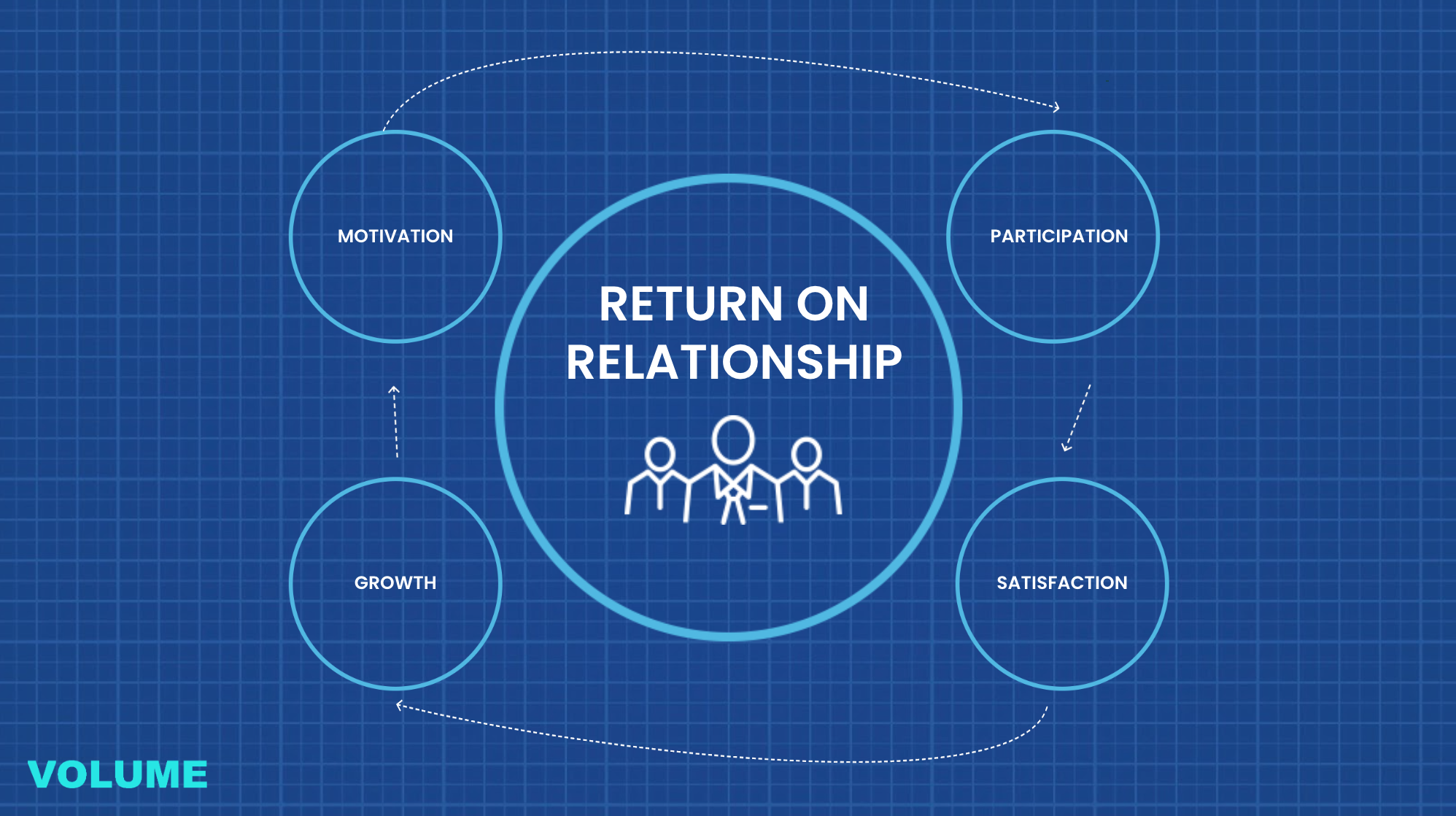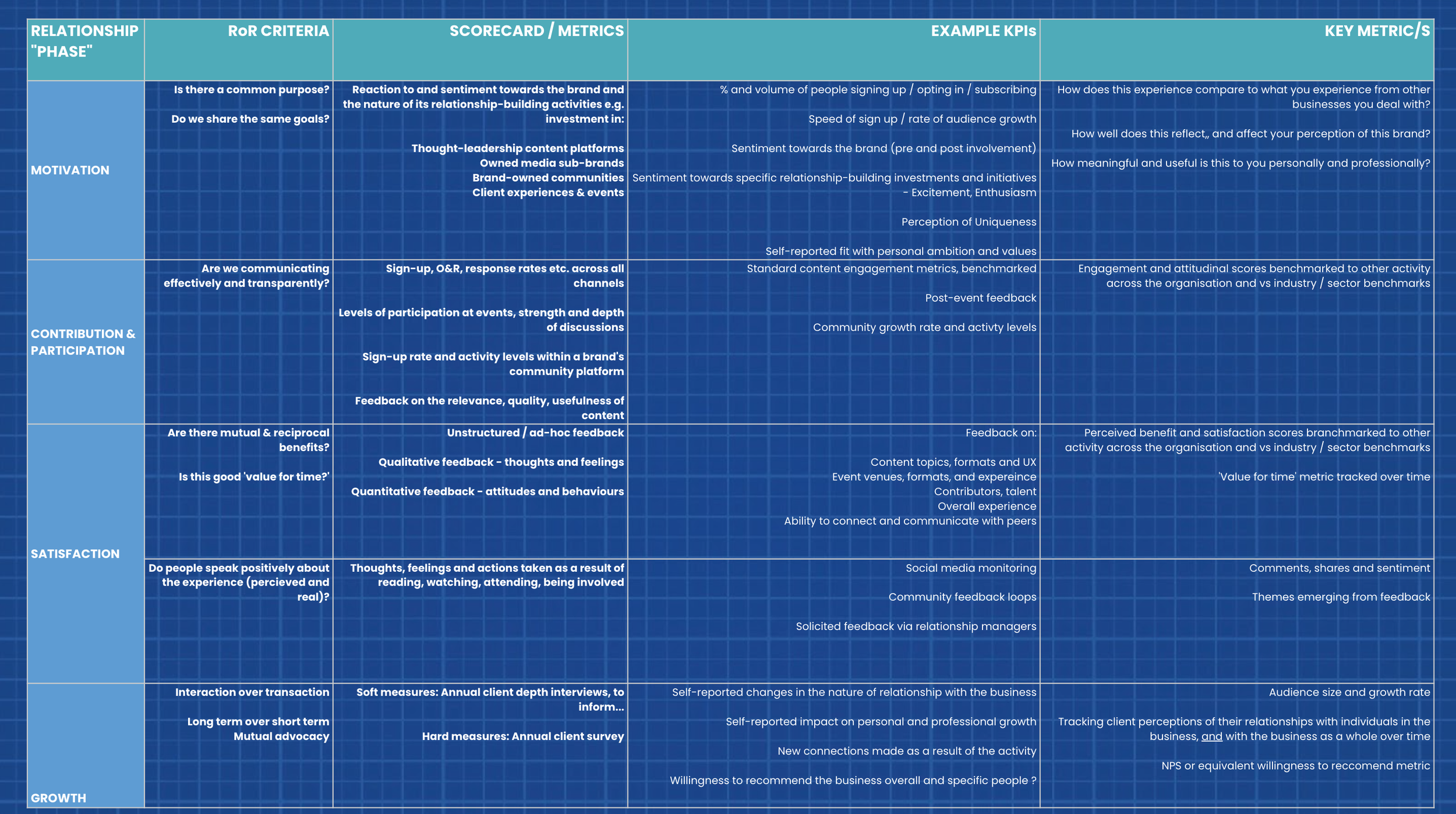How can we measure “Return on Relationships?”
Measuring RoI tends to focus on things that are simpler to measure. The value of investment in relationship building is complex but we're experimenting to find a way.
There’s a strong body of research evidence that those of us in (happy) relationships tend to live longer, happier lives. Indeed, the Harvard Longitudinal Study has proven that relationships have the biggest impact on a person’s happiness. Given the size of the prize, it’s no surprise that it takes personal investment to build personal relationships - see the latest research from October 2022 showing that it takes 34 hours to form a new friendship.
The same principle applies to business and professional relationships. On the surface, relationships in businesses tend to be more formal, logical, hierarchical and transactional. But real, long term investment can result in enduring, productive, profitable, but also emotional and meaningful business & professional relationships.
Given the current economic uncertainty we know that many businesses are downgrading growth forecasts and looking for ways to cut costs. But cutting investment in relationship building is a false economy. As the EY CEO Survey 2022 puts it “Focus on efficiency and stronger stakeholder engagement – emphasizing long-term value over short-term wins.”
The problem for investment in relationship building is that it's hard to measure objectively, and therefore runs the risk of losing out to activities with more transparent ROI. So we have used the experience of recent consultancy projects to develop a framework and a set of metrics for evaluating the success of relationship and community building.
Return on Relationship / RoR
There’s an argument that says generational and cultural shifts, HR policies, the Bribery Act, evolving societal values and the rise of hybrid working have changed the game, drawing a clearer line between what’s ‘personal’ and ‘business’ and making it harder to form truly transformational relationships than in the days of boozy lunches, going to the right school, and corporate hospitality.
But on the other hand, lots of things make it easier than ever to start, and grow relationships now; from Linkedin to build connections, to the informality of messaging apps to stay connected, and using social channels to regularly publish relevant, useful content that keeps you visible, building relevance and preference.
The media, content and channels on the left hand side that build connections are easier to measure so they get measured - and so they should; we want our investment in content to deliver a return and if our relevant reach and engagement are growing we can be confident that we’re on the right track.
The classic measure of value or ROI in a commercial relationship are Customer Acquisition Cost (CAC) at the start, and Lifetime Value (LTV) ongoing,, and they have a place in our framework. But the elements that build truly meaningful, transformational relationships tend to be less uniform from business to business, they may be less visible and therefore harder to track. So how can we measure ROI for relationships, where the payback may not be immediate, tangible or transactional?
We kept getting asked that question so we developed this simple framework to measure what we call Return on Relationship (RoR) which we’re happy to share - and even happier to hear suggestions for additions and improvements based on the experience of other brands, consultancies and agencies.
Defining and measuring RoR
1. We started by reviewing relationship models like Knapp’s Model of Relational Development which describes the stages - or steps - relating to communication and relationship development.
And Tuckman’s group development model (which many will know for it’s ‘forming, norming, performing, storming stages)
2. Using these two models as reference we analysed VOLUME client projects across 2021 and 2022 to define the characteristics that describe successful relationships in business:
There is clear progression, over the longer term, enabled by contact, context and communication
This is especially true and critical in the early stages
The most meaningful relationships grow where parties share a common motivation, set of values, and goal
Enduring relationships are characterised by common participation
And the strongest are where all / both parties make an equitable contribution
The most highly valued relationships are those built on mutual satisfaction, professional and personal growth
Relationship building involves risks but these can be anticipated and mitigated
3. Next we developed a simple scorecard, defining a set of metrics that can be used to track progress and outcomes across the 4 key stages: Motivation, Participation, Satisfaction and Growth and applied experience and best practice to the method of measurement. The result is this RoR framework.
RoR in practice
We’re starting to apply, and will continue to evolve this framework in practice across relationship and community building projects across multiple sectors, and both B2B and B2C. We’d love to hear your thoughts on the model. Better still, try it for yourself and share your experience and suggestions to build, adapt and refine it so we can all start to measure Return on Relationship more consistently and effectively.





